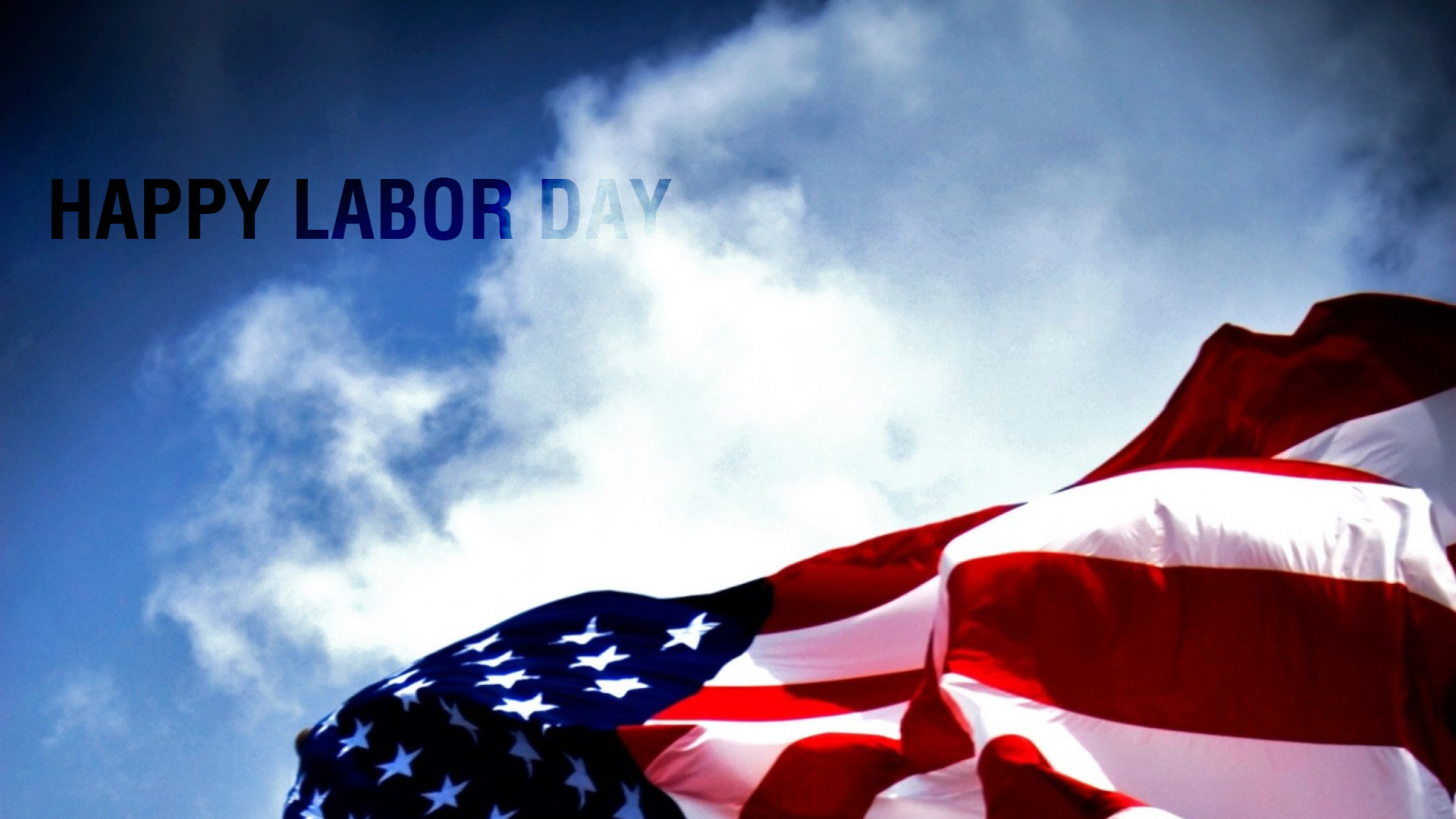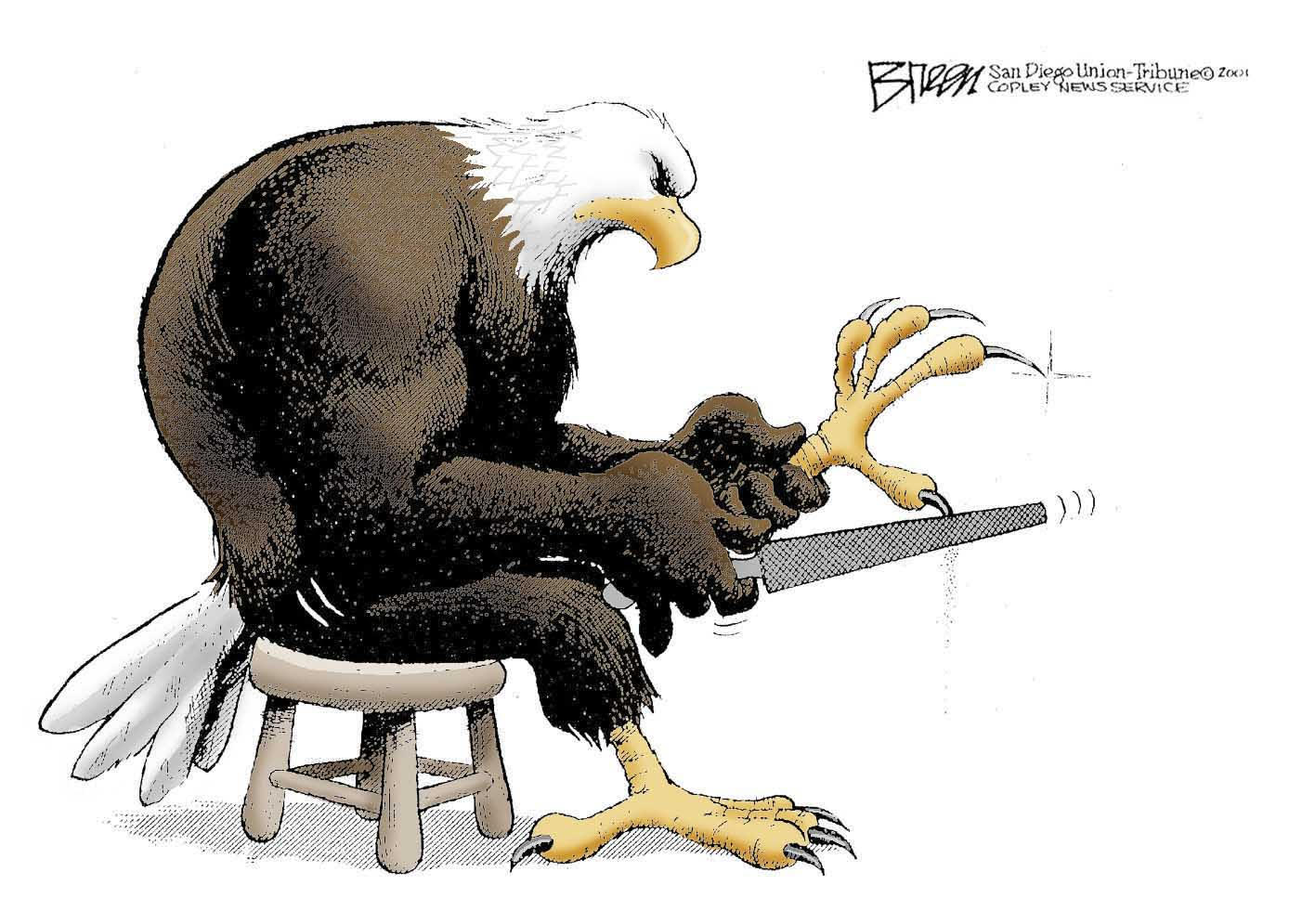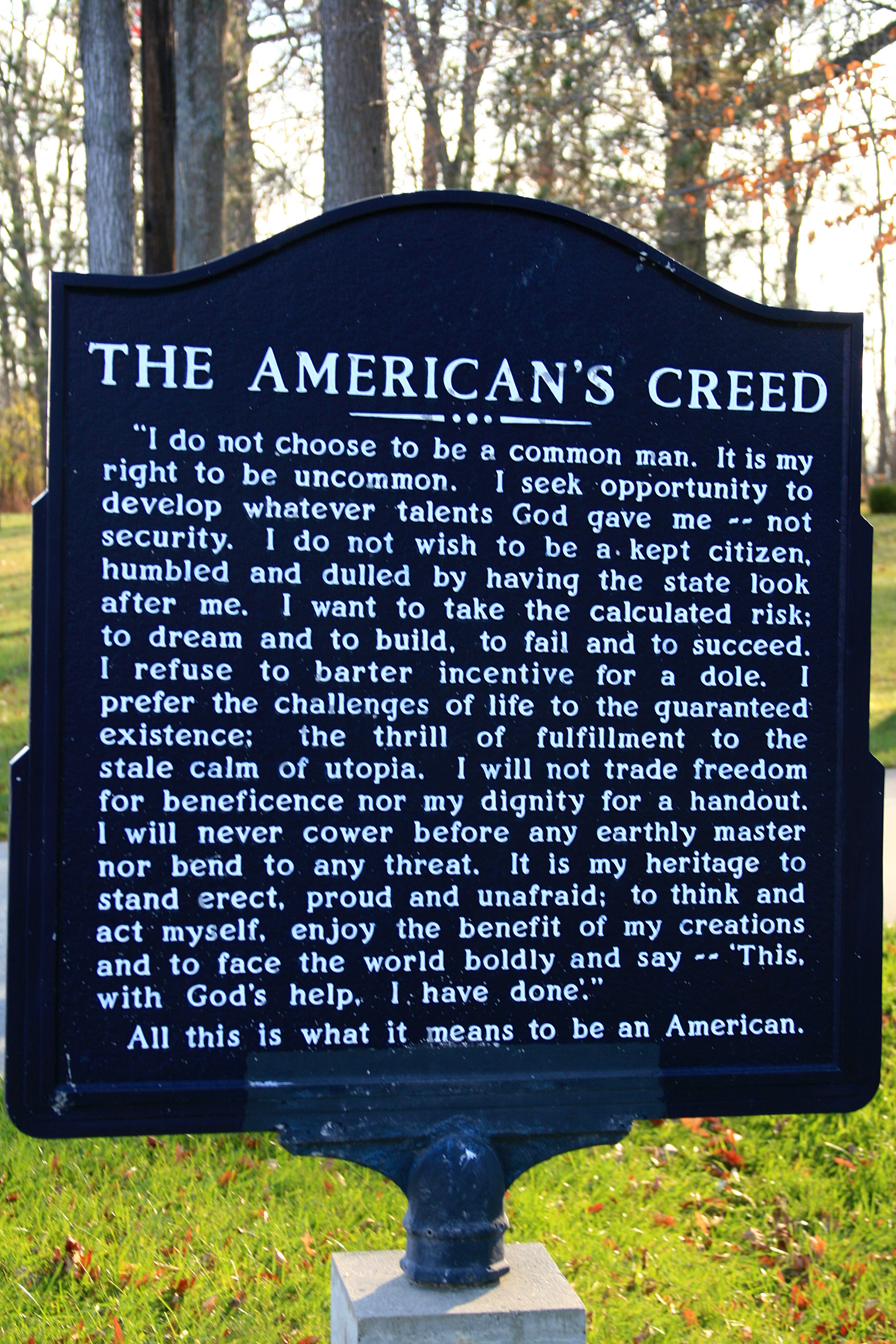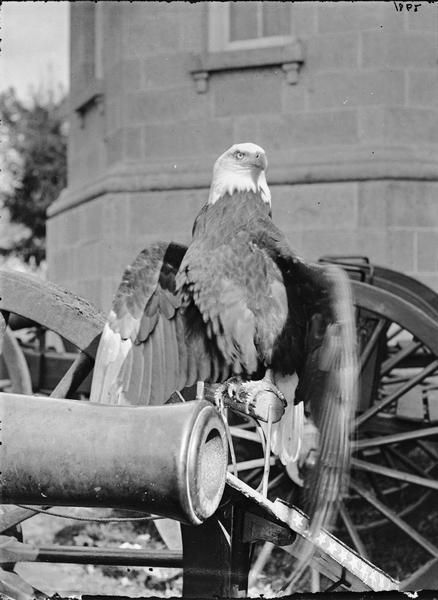Tag: Patriotism
American History: Old Abe
Old Abe, the American War Eagle, was the mascot of the 8th Wisconsin Regiment in the Civil War. Old Abe was in thirty-nine battles during the Civil War including Fredericktown, and the Siege of Vicksburg. Old Abe was not just a mascot, but became a patriotic symbol for the entire nation
Old Abe, Wisconsin’s Civil War Eagle
Old Abe, a tame bald eagle, was the mascot of the 8th Regiment of Wisconsin Volunteer Infantry in the Civil War and became a living symbol of the Union at war. He traveled with the 8th throughout the regiment’s participation in campaigns in the Western Theater from 1861 to 1864. Carried on a perch atop a shield, Old Abe was never wounded in any of the 37 engagements he participated in. He became famous for spreading his wings and shrieking at appropriate moments and was glorified by the Northern media. The 8th donated him to the government of Wisconsin, and Old Abe spent his postwar years living at the state Capitol, attending political rallies and being displayed at charity fundraisers.
More on Old Abe’s Life and Legacy
Ah-ga-mah-we-zhig (Chief Sky) of the Lac du Flambeau Lake Superior Chippewas captured Old Abe when he was an eaglet in 1861. Chief Sky traded the eaglet to the McCanns of the Jim Falls area. The McCanns later sold the adolescent eagle to the Eau Claire company of the Wisconsin Volunteer Infantry who named him Old Abe. The Eau Claire company combined with others to form the 8th regiment, and Old Abe became famous as their mascot and a constant presence in battle, on the march and in camp. During his life with the regiment, Old Abe became known for pilfering from the camp, spreading his wings on command and dancing to music.
In 1863 the 8th Wisconsin presented Old Abe to the state, and the eagle spent the rest of his life captive at the Capitol building in Madison or on display for various political, social and cultural causes. Old Abe’s living conditions while in the government’s care declined over time and he suffered from exhaustion, exposure and malnutrition on a number of occasions.
In 1881 a small fire broke out in the basement of the Capitol, igniting stored paints and oils and filling Old Abe’s quarters with smoke. The flames did not reach Old Abe’s confines, but the smoke seemed to negatively affect his health. He sickened and died within a month.
After his death, the state had Old Abe’s corpse preserved by taxidermy. He was displayed at the Wisconsin Historical Society until 1903 when he was moved to the G.A.R. Memorial Hall in the Capitol. A fire the next year in 1904 consumed his remains.
During his life and after his death, Old Abe has been the subject of numerous semi-fictionalized accounts and tributes.
Wallpaper Of The Day: Happy Labor Day

LABOR DAY: WHAT IT MEANS
Labor Day, the first Monday in September, is a creation of the labor movement and is dedicated to the social and economic achievements of American workers. It constitutes a yearly national tribute to the contributions workers have made to the strength, prosperity, and well-being of our country.
LABOR DAY LEGISLATION
Through the years the nation gave increasing emphasis to Labor Day. The first governmental recognition came through municipal ordinances passed during 1885 and 1886. From these, a movement developed to secure state legislation. The first state bill was introduced into the New York legislature, but the first to become law was passed by Oregon on February 21, 1887. During the year four more states — Colorado, Massachusetts, New Jersey, and New York — created the Labor Day holiday by legislative enactment. By the end of the decade Connecticut, Nebraska, and Pennsylvania had followed suit. By 1894, 23 other states had adopted the holiday in honor of workers, and on June 28 of that year, Congress passed an act making the first Monday in September of each year a legal holiday in the District of Columbia and the territories.
FOUNDER OF LABOR DAY
More than 100 years after the first Labor Day observance, there is still some doubt as to who first proposed the holiday for workers.
Some records show that Peter J. McGuire, general secretary of the Brotherhood of Carpenters and Joiners and a co-founder of the American Federation of Labor, was first in suggesting a day to honor those “who from rude nature have delved and carved all the grandeur we behold.”
But Peter McGuire’s place in Labor Day history has not gone unchallenged. Many believe that Matthew Maguire, a machinist, not Peter McGuire, founded the holiday. Recent research seems to support the contention that Matthew Maguire, later the secretary of Local 344 of the International Association of Machinists in Paterson, N.J., proposed the holiday in 1882 while serving as secretary of the Central Labor Union in New York. What is clear is that the Central Labor Union adopted a Labor Day proposal and appointed a committee to plan a demonstration and picnic.




 More than 100 years after the first Labor Day observance, there is still some doubt as to who first proposed the holiday for workers.
More than 100 years after the first Labor Day observance, there is still some doubt as to who first proposed the holiday for workers.